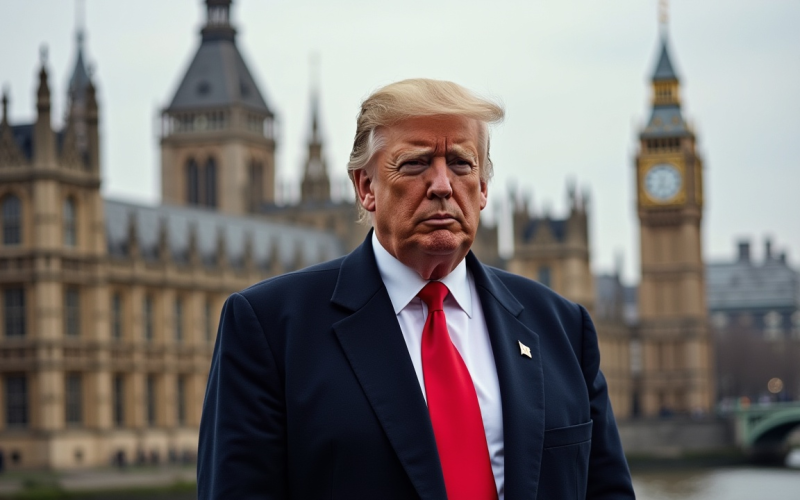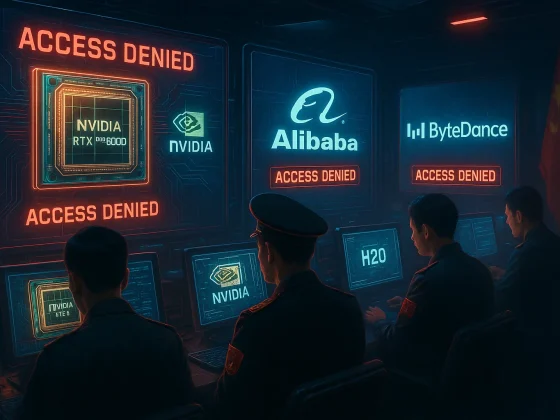State visits to the UK do not happen often. And although this is Trump’s second UK visit this year alone, it appears that the stakes are high for the US President.
On the surface, Donald Trump’s current UK visit is about trade deals, AI investments, and energy. But what if there was also something else at play this time?
What makes this state visit different
State visits are not really routine. They are the highest diplomatic show Britain can stage, normally offered only once per leader. Trump receiving a second is unprecedented in the modern era.
It shows that both Downing Street and Buckingham Palace want to emphasise a deepening relationship.
The programme is carefully designed. A day of pomp at Windsor Castle with King Charles III is followed by working talks at Chequers. There is no parliamentary speech.
The focus is supposed to be narrow. Trade, investment, energy, and security are on the agenda. The choreography is deliberate, aimed at maximising deal headlines while minimising controversy.
Is the steel tariff story really a win
The UK went into these talks hoping for a zero-tariff quota on steel exports. But that hope is gone.
Instead, Prime Minister Keir Starmer has pivoted to securing a permanent 25% tariff, which is still half the 50% paid by other exporters. Officials are selling this as certainty. Industry is less convinced.
A fixed 25% is better than exposure to a 50% wall, but it is still a tax that erodes competitiveness.
It will hit not just steelmakers but manufacturers reliant on steel inputs, from machinery to vehicles.
Investors should read this not as a breakthrough but as a reminder of leverage. Washington dictates terms, London accepts damage limitation.
The symbolism is that trade is not the prize of this visit.
Why the real story is AI and datacentres
The centrepiece is the £31 billion “Tech Prosperity Deal”. Microsoft, Nvidia, Google and others have pledged vast sums into British infrastructure.
Microsoft leads with £22 billion for cloud and AI, including a new supercomputer in Essex.
Nvidia will deploy 120,000 GPUs, which will be its largest rollout in Europe. Google will spend £5 billion, expanding its Waltham Cross data centre and DeepMind’s research. CoreWeave and Amazon Web Services are also in.
Both sides stand to gain. These companies need land, energy, and regulatory certainty to expand AI capacity outside the United States.
Britain is positioning itself as the light-regulation, pro-American hub, in contrast to the European Union’s more interventionist model.
Investors should see this as a bet on the UK becoming one of the top AI buildout zones in Europe.
The constraint will not be capital. It will be planning approvals, land availability, power generation, and grid connections.
Google is already highlighting energy pressures and promising 95% carbon-free power for its UK sites.
The question is whether Whitehall can move at hyperscaler speed. If not, the £31 billion headline shrinks fast.
Can nuclear really keep up
The AI boom requires staggering amounts of electricity. That is why nuclear is suddenly centre stage. The UK and US have launched the Atlantic Partnership for Advanced Nuclear Energy, designed to halve licensing times.
The flagship commercial plan is for Centrica and X-Energy to build up to 12 advanced modular reactors in Hartlepool, enough to power 1.5 million homes and create 2,500 jobs.
This is long-cycle investment. Even if approvals move twice as fast, first power is unlikely before the mid-2030s.
The UK’s track record on nuclear cost overruns is dire. Sizewell C has already risen from £20 billion to £38 billion.
The logic here is that without nuclear, Britain cannot sustain the data centres, electrification, and AI infrastructure now promised. Nuclear is becoming the foundation stone.
For investors, the message is timing. Nuclear may unlock returns for energy and industrial suppliers, but it will not rescue near-term growth. It is about whether Britain regains credibility in long-term project execution.
The shadow hanging over Windsor
The visit has not escaped scandal. Peter Mandelson, appointed earlier this year as UK ambassador to Washington, was fired days before Trump arrived after new evidence of his ties to Jeffrey Epstein emerged.
Activists projected Epstein-related imagery onto Windsor Castle ahead of the banquet. It was the precise photo the Palace hoped to avoid. Four people have already been arrested.
Ultimately, optics shape the politics of investment. The government wants the narrative to be about jobs, technology and growth.
Instead, it is battling questions about judgment and credibility. For Trump’s team, the objective is to drown out scandal with images of regality and business headlines.
Major outlets report the visit is “carefully choreographed” to steer clear of Epstein references and wider personal controversies.
The White House has denied the authenticity of the alleged Trump-to-Epstein birthday letter now circulating. Both sides are playing against the same risk: that controversy overshadows capital.
What investors should really take away
This trip is not about trade liberalisation, but mainly about capital deployment.
Britain is importing America’s AI, nuclear and finance platforms. Trump is exporting American capacity and keeping tariff leverage intact. The symmetry is deliberate.
The upside is clear for the UK. If these investments stick, Britain becomes one of the top AI and data infrastructure hubs in Europe.
Thousands of jobs, billions in private spending, and new industrial capacity follow.
Stramer’s agenda is economic wins, and fast. But the downside is equally sharp. Failure to deliver grid capacity and planning reform would stall projects.
Reliance on US firms raises the question of sovereignty. And steel tariffs show that Britain is still on the receiving end of Washington’s economic power.
This trip is also about the investment narrative for the US. The White House wraps corporate pledges into a broader “America unlocks AI for allies” story, while retaining tariff leverage on metals and data policy.
For investors, the scoreboard is not today’s banquet speeches.
It is megawatts connected, GPUs delivered, sites built, and jobs on payroll. If those numbers are visible by mid-2027, this week will look like a hinge moment.
If not, it will read as another glossy brochure of promises deferred.
The post Money, power, AI: what Trump’s UK visit is all about appeared first on Invezz


